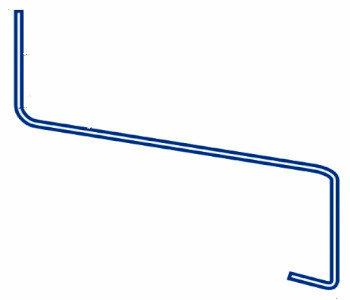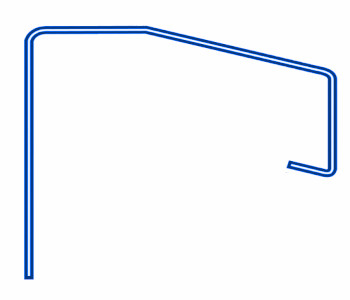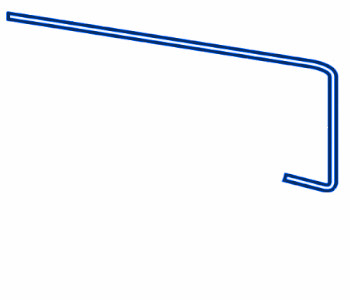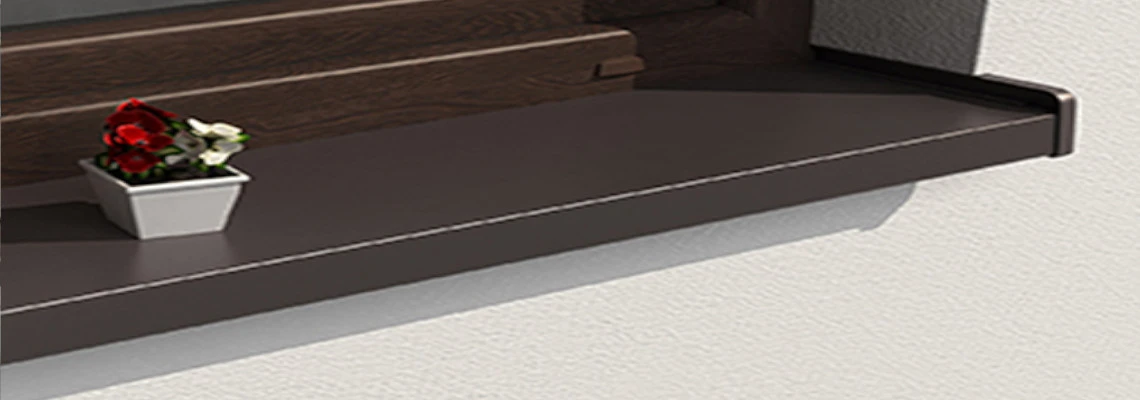
External wall insulation installed recently?
Window sill turns out to be too short?*
Windows provide any home with a clear view of the outside as well as reliable protection against inclement weather. If you have quality windows fitted in your house, you are not planning to replace them soon. However, when you decide to install outside insulation, everything changes. Although window may remain the same, but the window sill turns out to be too short. Am I right?
You will then need to extend the sills during external insulation jobs.
One way to easily and efficiently expand the sill is by placing a new sill on top of the current one, with an increased width that facilitates proper water drainage.
For customers that don’t like UPVC we got an aluminum sill to offer. Thy can be pre-painted for you in all RAL colours. Pre-painted sill will not only match window color but also will provide a magnificent look to your property. Remember "the devil is in the details". No wonder people say that. They mean that small things are important. In other words, details matter and when they are overlooked, problems with sills arise. What will you end up with? End of the day it’s all up to you .
Most of the London properties seems to have stone or tile sills. It means a piece of stone or concrete across the length of the window is fitted. Many installers find them tricky to extend, as they need to keep style of the property.
Wemico ® Company offers perfect stylish finish to all of those properties where you need to keep the appearance as similar as possible.
You can choose between:
Type 721- Oversill Eaves Flashing and Window Sill Extension
Type 731- Aluminium Undersill Flashing and Window Sill Extension
Type 741- Aluminium Soffit Eaves Flashing and Window Sill Extension
Type 751- Aluminium Oversill and Window Sill Extension
Type 761- O'sill Aluminium Window Sill Extension
What is external window sill?
External window sill protects the masonry from accumulating moisture and grime and modern thermal insulation techniques also reliably prevent harmful heat bridges from forming.
How to extend an external window sill?
Perhaps you want to know how to fit them?
When you install external wall insulation, you may notice that external window sill should be wider than the thickness of the insulation layer on which it is installed. Yes,that is right.
Window sill extender have to stick out from the wall to enable the water to run off properly when it rains. Without a window sill extender, the rain water can pool and cause damp problems. It should be tightly connected with the window frame so that during rain the water runs down the window and plaster onto the window sill, and then onto the ground, not under the window.
In order for the water to drip down, the external window sill should be installed with a slope of 1-2% to the outside. It must protrude 2.5-5 cm beyond the face of the wall.
Additionally, an important element of external window sills is an outer edge. It should always be profiled in a way that prevents water from seeping under the window sill.
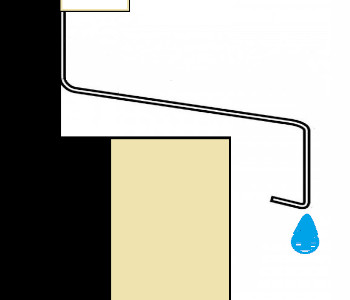
How to install window sill extension? Installation guide.
The window sill must not cover the woodwork drainage holes.
When installing external steel window sills, the following guidelines should be taken into account:
1.The window sill should protrude 30-40 mm beyond the finished facade.
2. When cutting the sill to size, protect the edges.
3. Aluminum window sills have a slight linear expansion (heating by 50 degrees Celsius causes an elongation of 0.5 mm), thanks to which window sills up to 6 m long can be installed without an expansion joint.
4. In order to ensure proper drainage of water from the sill surface, a 5-degree inclination should be used.
5.The self-adhesive protective film should be peeled off immediately after installing the window sill.
6.The gap under the sill must be filled with low-expansion polyurethane foam. It is a good idea to load the sill along its entire length right after applying the foam.
Polyurethane foam must be applied carefully, in small portions. When too much of foam is applied, it can push the sill upwards.
7. Remove the protective film from the window sill and secure it with silicone.
How to cut an aluminium sill?
Most often, angle grinders, circular saws and jigsaws are used for this purpose.
The angle grinder works well when cutting aluminum, provided that a special cutting disc is used for this material.
Another handy piece of equipment suitable for cutting aluminum is a jigsaw. In this case suitable saw blade must be purchased.
It is worth paying attention to whether the specification contains information about the possibility of cutting aluminum and the maximum thickness of the sheet.
A circular saw is a universal tool used in various types of workshops. It can also be used for cutting aluminum, but as with an angle grinder, you should choose an aluminum blade for it.
When cutting an aluminum, it is absolutely necessary to remember about personal protective equipment: glasses and gloves.
5 things you'll need to install window sill
Before commencing installation of you windows sill you should check you have all necessary materials and tools to complete the job. In particular you will need
- Exterior silicone
- Expanding (fixing) foam
- Tape measure
- Pencil
- Caulk gun
We offer one of the widest ranges of sill extensions.
Extensive stock levels are held, enabling an excellent level of service, whilst also maintaining uncompromising quality.
All our Aluminum window sills are produced by the aluminum pulling method from structural alloys that meet the highest quality standards.
In addition to this, a specialist fabrication service is available for unique specifications requiring made to measure details.
*All the information provided in the content published on Insulationgo blog is for informational and educational purposes only. Insulationgo LTD makes every effort to ensure the accuracy and timeliness of the content, but we do not assume any responsibility for any errors or omissions.
The information presented on this blog should not be considered as professional advice or a substitute for consulting relevant experts. Before making any purchase decisions or taking action based on the information presented here, it is strongly recommended to contact the product manufacturer directly to verify the details and ensure its suitability for your specific needs.
By using this blog, you acknowledge and agree that Insulationgo LTD shall not be held liable for any damages, losses, or inconveniences arising from the use or reliance on the information provided herein. This limitation of liability applies to all users of the blog, including but not limited to visitors, readers, and subscribers.










































































































